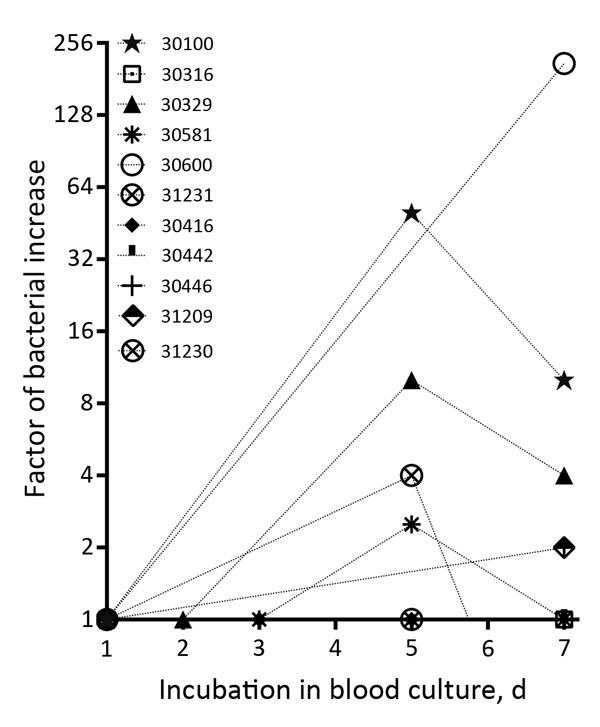Volume 22, Number 8—August 2016
Dispatch
Survival and Growth of Orientia tsutsugamushi in Conventional Hemocultures
Figure

Figure. Growth curve of Orientia tsutsugamushi in hemoculture bottles from individual patients, Ventiane, Laos, 2014. The increase in bacterial numbers is represented as bacterial multiplication factor and plotted on a log2 axis. Patient codes in key match those listed in the Table.
Page created: July 15, 2016
Page updated: July 15, 2016
Page reviewed: July 15, 2016
The conclusions, findings, and opinions expressed by authors contributing to this journal do not necessarily reflect the official position of the U.S. Department of Health and Human Services, the Public Health Service, the Centers for Disease Control and Prevention, or the authors' affiliated institutions. Use of trade names is for identification only and does not imply endorsement by any of the groups named above.